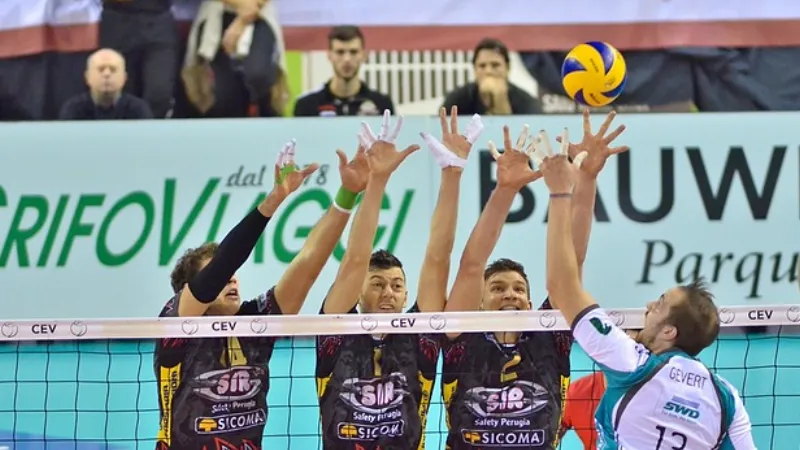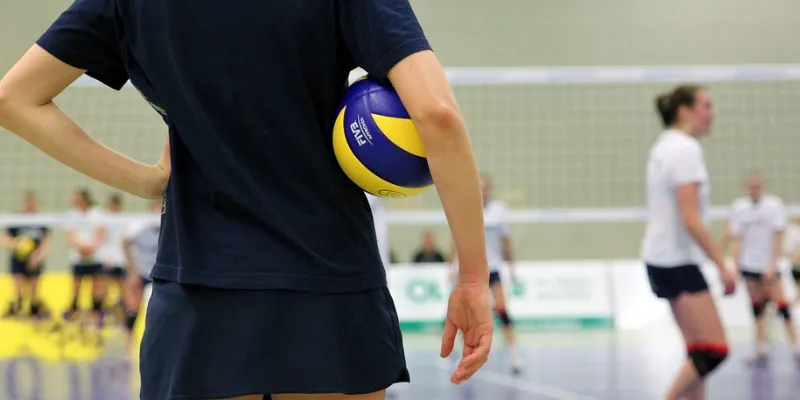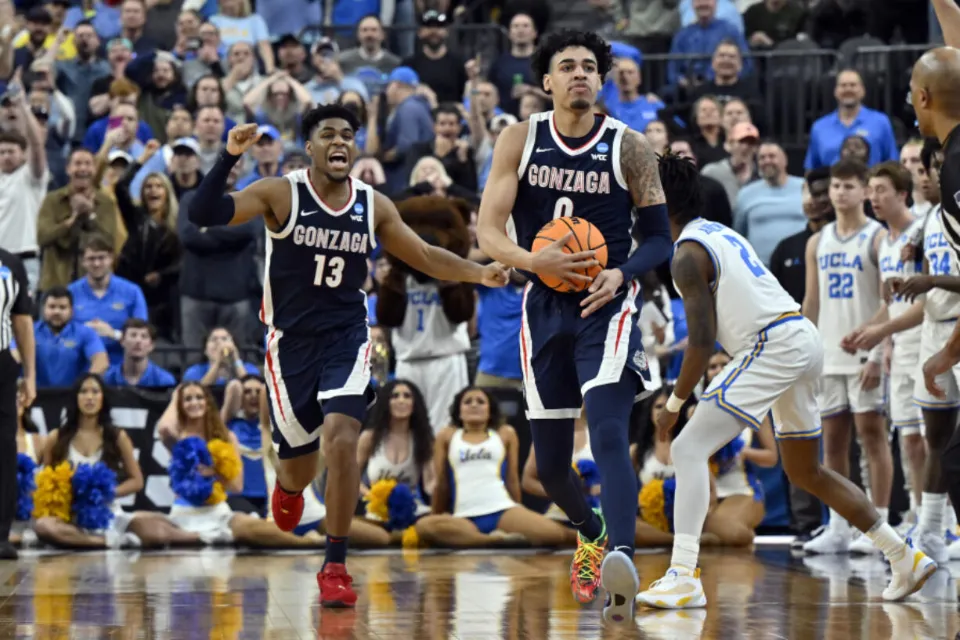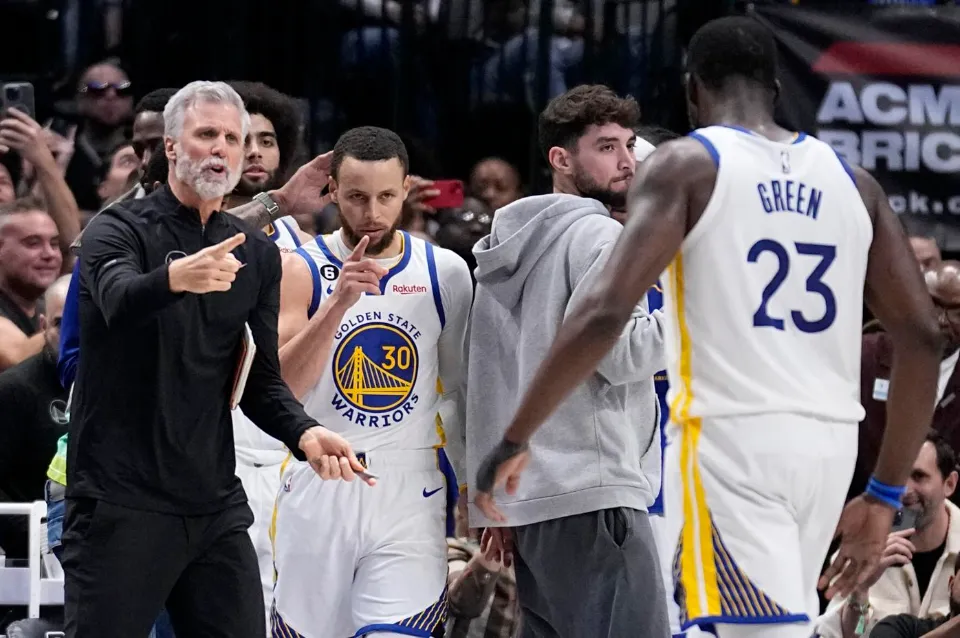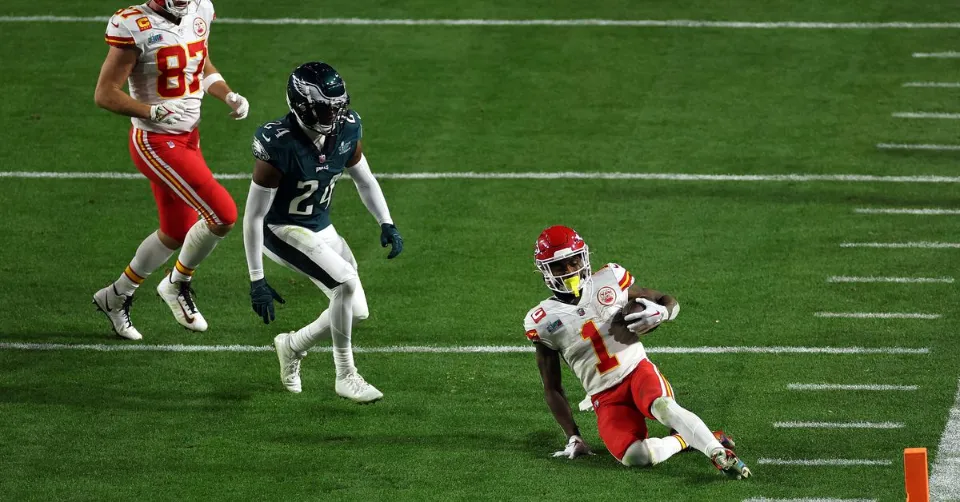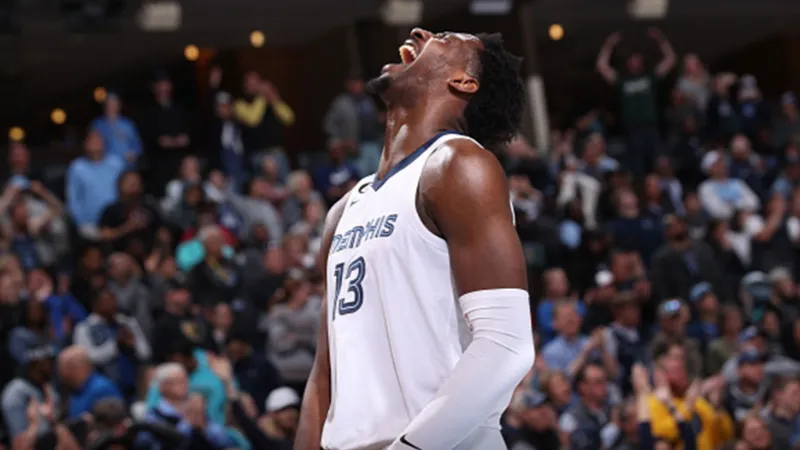Full-court Press In Basketball: Meaning & Why & Types & When
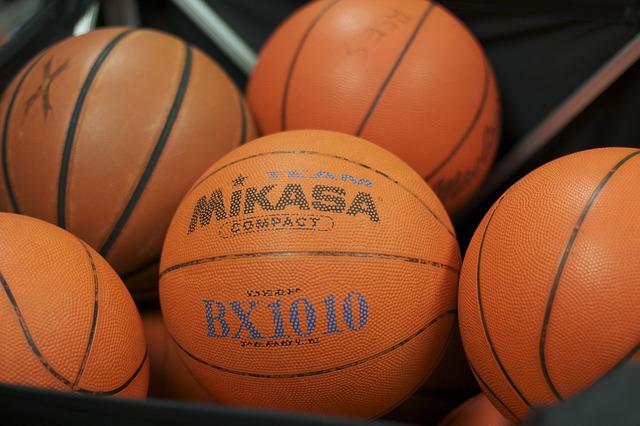
First, explain the basketball term for the full-court press.
A full-court press is a basketball term for a defensive style in which the defense applies pressure to the offensive team the entire length of the court before and after the inbound pass. Pressure may be applied man-to-man, or via a zone press using a zone defense. Some presses try to block the first inbounds pass and ensnare ball handlers in the backcourt or at midcourt.
Defenses not employing a full-court press generally allow the offensive team to get halfway down the court (a half-court press) or near the basket before applying strong defensive pressure.
Please continue reading for more information.
Table of Contents
What Does A Basketball Full-court Press Mean?
A full-court press in basketball refers to a tactical playing style where defenders apply intense pressure to the opposing team’s offense throughout the entire court. John McLendon, the renowned African-American coach who also created the fast break, pressure defense, and two-in-the-corner offense, created the full-court press defense in the 1950s.
The majority of basketball defenses involve the defensive team concentrating closer to the basket while leaving the offensive team free access to the center of the court. The ball handler for the offensive team can set up an offensive formation and execute a pre-planned play while these half-court defenses are more durable over the course of a game. Full-court pressing hinders the offensive team’s ability to fully coordinate their tactics, up the tempo of the game, and force turnovers due to the intense pressure that is applied.
Reasons To Run A Full-court Press
To Create Turnovers
Let’s start with the perk that is most obvious…
causing turnovers from the opposition.
Your team will have more opportunities to score the more steals they can secure by applying a full-court press.
To Dictate The Tempo Of The Game
The advantage that basketball coaches frequently overlook is using a full-court press to control the game’s tempo…
Nevertheless, it might be the most crucial justification for using one.
Running a press can force the opposition away from their strengths and force them to play a style of basketball they are not accustomed to, even if it doesn’t lead to a steal for your team.
The defense just scored a major victory.
For example…
Running a full-court press will make the team you’re up against play faster and take more careless shots early in the offense if they prefer to slow the ball down and pass inside to a dominant post player.
The Types Of Full Court Press Defenses
Full-court man-to-man, run-and-jump, and full-court zone presses are a few examples of full-court press defenses.
Full Court Man To Man Press
In the same way as the traditional half court man to man defense, the full court man to man press pairs each defender with an offensive player of a similar size.
In contrast to the half court man to man defense, the full court man to man press initiates the defense and extends it into the backcourt rather than just the frontcourt.
The full court man to man press also typically employs the same defensive strategies as the half court man to man press, such as on-ball pressure, denial defense, help defense, and occasionally switching defense.
Run And Jump Defense
The full court man to man press is essentially modified into the run and jump defense. The run and jump defense incorporates sideline traps as well as defensive switching principles, which is primarily how they differ from other types of defense.
In essence, the run and jump defense is a cross between the full court man to man defense and the full court zone press.
Full Court Zone Press
The full court zone press includes a number of strategies in which defenders cover specific areas or zones with sideline traps in the frontcourt or backcourt to reduce or obstruct offensive scoring opportunities and/or to induce offensive turnovers.
A backcourt defender is placed below the dotted half circle in the lane, one near the top of the three-point arc, two near the sidelines, and one near the high post area in the 1-1-2-1 press.
Beginning with one backcourt defender below the free throw line, one backcourt defender above the arc, and three frontcourt defenders close to the half court line near the circle and sidelines, the 1-1-3 press is used to contain the offense.
The backcourt defenders in the 1-2-1-1 press are placed below the dotted half circle, one near the half court circle, one each near the wing areas. Near the high post area, there is also a frontcourt defender.
A backcourt defender near the top of the three-point arc, two backcourt defenders close to the half court line, and two frontcourt defenders above the arc make up the 1-2-2 press.
A backcourt defender is placed near the top of the three-point arc, three frontcourt defenders are placed near the half court line, and a fourth frontcourt defender is placed close to the high post area.
Two backcourt defenders are located near the slot areas of the 2-1-2 press, one backcourt defender is located inside the half court circle, and two frontcourt defenders are located above the three-point arc near the slots.
Two backcourt defenders start the 2-2-1 press near the high post elbows, two frontcourt defenders start near the half court line, and one more frontcourt defender starts near the high post area.
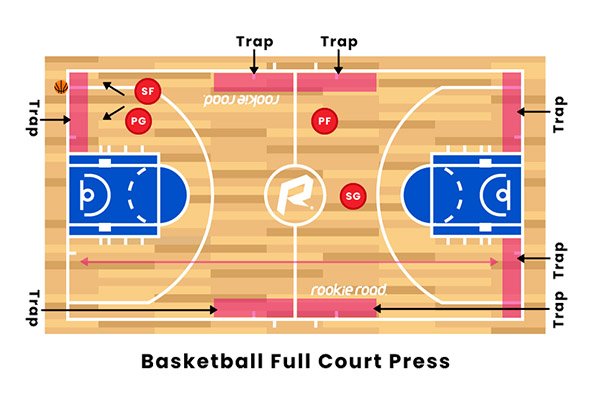
When Should A Full Court Press Be Run?
Against anyone, a full-court press will work…
However, using one against particular opponents or in particular circumstances can increase the likelihood that your team’s full-court press will be successful.
Here are a few instances:
Against Teams With Poor Decision Makers
For breaking a press and moving the basketball up the court, dribbling and passing are the two most crucial skills…
A full-court press can be very effective against teams without good guards who make good decisions, so this shouldn’t be a surprise.
Against Teams With A Limited Bench
Physically and mentally taxing is playing against a full-court press.
Both the offensive and defensive teams find it difficult to compete full-court, possession after possession.
This immediately favors the team with a deeper rotation because they can keep their team fresh by rotating players in and out without sacrificing the level of play.
Against Teams With A Great Half-court Offense
Against teams that prefer to play their half-court offense and slow the game down, a high-intensity full-court press can be very effective.
the same illustration as before…
Maybe they like to isolate a strong post player on the block.
The game can be accelerated by applying a full-court press, which also eliminates their half-court offense. See more about What Is ISO In Basketball?
When Your Team Needs A Burst Of Energy
There are some games where your team appears drained and uninspired to play hard.
They may have already played two or three games that weekend or your team may have recently traveled a great distance to a tournament.
In either case, employing a high-intensity full-court press can be a great way to mix things up and motivate your team after a sluggish start.
When The Opposition Goes On A Run
Use a full-court press to change the momentum of the game if you experience a stretch where the opposition scores 6–8 points in a row.
By believing they have your team figured out, the opposition team’s confidence can soar if they allow a brief scoring run of 6 or more points…
A great way to mix things up and regain control of the game is to alter the defense and tempo.
To Get The Ball Away From A Star Player
When your team comes up against a great point guard, you sometimes just want to take the ball away from their hands..
A full-court press makes them pass early rather than allowing them to easily dribble up the court and establish the offense.
It can force a different player to set up the offense and create scoring opportunities, as long as your team makes it difficult for them to easily get the basketball back. See more about Basketball Lines On Ball
What Are The General Benefits Of A Full Court Press?
Simply being able to stop the rhythm and flow of the offense is a full court press advantage.
No matter what type of basketball offense they are using—a half court set, motion, continuity, or transition-based offense—offensive teams generally prefer to play at their own brisk or slow pace.
However, if the defensive team employs a full court press, this effectively forces the offensive team to play at a pace (typically a faster one) which might not be suitable for the offensive team’s strategies or personnel.
As a result, the offensive team may take unfavorable field goal attempts, such as contested jump shots, or commit mistakes, such as poor passes, which may then result in turnovers. See more about What Is Top Of The Key Basketball
A Full Court Zone Press’s Drawback Is What?
Because each defender usually covers specific areas or zones of the court, the full court zone press has the notable drawback of leaving gaps or openings between the defenders.
The biggest gap, as well, is typically in the center of the full court zone press. Because of this, if an offensive team, especially one with a high basketball IQ, is able to pass the ball into the gaps of the press, especially the middle gap (which also breaks the press), the defense may become exposed to opportunities for offensive scoring, such as transition layups or open three-point jump shots. See more about Air Ball In Basketball
Decide Which Press To Implement
It can be challenging for a coach to select the exact full-court press to teach their team because there are so many options available.
Here are the three key questions to consider to assist you with this…
Which Speed Do You Prefer To Play At?
Assessing the pace at which your teams play their best basketball is the first thing you need to do.
Utilizing the 1-2-1-1 press, some teams prefer to play quickly…
stealing the ball and sprinting to the basket in an effort to score or draw the foul.
Other teams prefer to use the 2-2-1 press to slow down the ball…
forcing a turnover, applying the breaks, and then either passing the ball to a post player inside or working it inside to the perimeter.
Which Of Your Key Players Has What Advantages And Disadvantages?
Then, take a close look at each of your important players…
If your team has a great post player who can defend the rim in a two-on-one situation, you may feel confident using an aggressive press like the 3-1-1 because you know that even if the first two defensive lines are overwhelmed, your post player will still be able to defend the rim.
A conservative press like the 1-2-2 might be preferable if you don’t.
Which Press Will Work Best Against Your Foe?
Two different full-court presses can be used when coaching older teams who have more practice time…
one that quickens the opposition (ex. 1-2-1-1) and one that slows them down (e.g. 2-2-1).
According to the opposition, your team can then alter its strategy.
But for youth basketball, I suggest concentrating on the first two inquiries and picking a full-court press that works for your team’s personnel without taking the opposition into consideration.
The Most Essential Part Of A Full-court Press
The following quote was spoken while I was watching an online coaching clinic, and it has stuck with me ever since…
Running a full-court press requires a strong desire to rush back on defense once it has been broken.
Agreed.
No matter what full-court press you employ, it won’t always be successful when your team sets it up.
Heck, even the best teams might only force a turnover on less than 25% of possessions.
Because of this, each member of the team must be committed to sprinting back to the defense as soon as the ball crosses their defensive line.
Once they are back, players must coordinate with one another and make shrewd rotations to guarantee that all offensive players are being guarded without allowing an opportunity for a free throw.
The End
We could just play full-court man-to-man “pressure defense” to counter our full-court press. Younger players would benefit from playing this full-court defense because:
The offense will frequently turn the ball over with just a little man-to-man pressure, so it is effective. Middle-school players typically cannot breach this defense, but offensive players with higher levels of experience (high school) can.
Less practice time is needed, and it is simple to teach. However, learning how to correctly execute a full-court zone press takes a lot of practice.
The same fundamental man-to-man defense strategies that are used in full-court play (on-ball, deny, and help-side defense) are taught to players.
With this defense, there is not much chance or gambling.
Man-to-man full-court pressure defense is also known as pressure defense. I tell my players, “we are going to pressure this team,” as opposed to the alternative phrase, “we are going to press this team.”” Full-court zone presses frequently imply trapping and gambling. We rarely gamble or trap when using the “pressure defense.”
To find out more about our thegracesports, get in touch with us right away.

